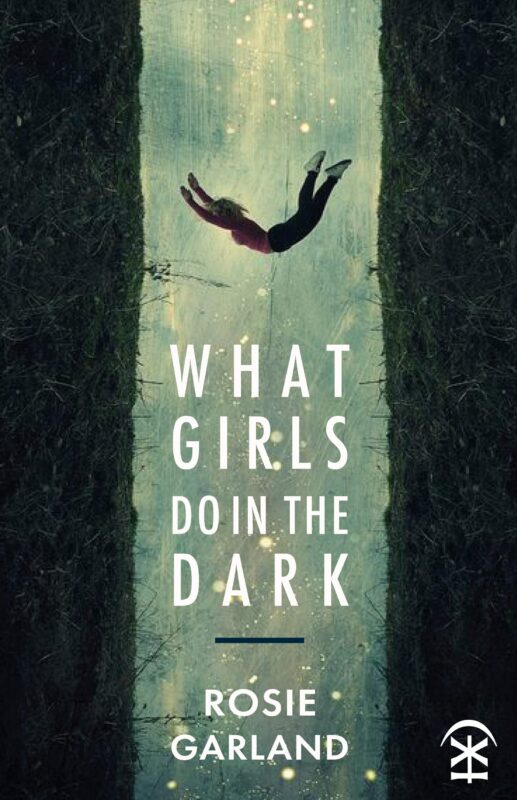REVIEW: ROSIE GARLAND’S ‘WHAT GIRLS DO IN THE DARK’
Reviewed by Stella Backhouse

Poetry and astrophysics. If they sound like polar opposites, consider for a moment that polar opposites can only be polar opposites if they’re first situated on the same circle; so maybe they’re not as unlike as they seem. The poetry of Rosie Garland’s 2020 collection What Girls do in the Dark finds fellowship in the weird, counter-intuitive behaviour of space phenomena, converting it into metaphor for her own sense of not conforming to society’s norms. Cosmic winds jangle almost audibly through ‘Trans-Neptunian objects’, where the titular minor planets “break the law of what is and isn’t planet./They will not kneel in perfect circles round the sun,/won’t toe any ordered line. There’s nowt so queer/as Pluto, Sedne, Eris, Thule, Makemake”.
Comets are the heavenly bodies with which Garland identifies most, but her relationship with them changes over time. From confinement in what she at first perceives as the rigidly circular orbits of objects that cannot emit their own light, she moves to liberation through the realisation that in reality their paths are eccentric and off-kilter, and that they create their own beauty. The first poem is called ‘Letter of rejection from a Black Hole’ – but actually, who would want to be accepted by an entity whose great work is “the dismemberment of time and matter”? Wouldn’t anyone rather “have the right to glow”?
Later, in ‘Self-portrait as Halley’s Comet’ she likens her decision to take a job in Sudan to chasing her tail: “I…learn nothing except/how to tear myself apart in tiny increments. Stuck in the rut/or orbit, I mistake flight for healing”. By the end of the next poem ‘Perihelion is the closest a comet gets…’, Halley’s Comet has inspired her to shift from hopelessly trying to “toe the narrow line of girl-wants-boy” to understanding that “I am not locked into/the pull of a sun that will one day destroy me./The sky is a blank page on which to sketch new charts;/off the map, a long way from a perfect circle.”
These shifts in perspective mean that What Girls do in the Dark is both a looking-backwards and a looking-forwards collection. It covers quite a long time period – Garland worked in Sudan in the 1980s – during which life inevitably separates into phases. There are some lacerating feminist poems. I don’t know when ‘Saint Catherine’ was written but even if it was some time ago, lines like “They will kill you/for being cleverer,/worse than laughing at their dicks” have lost none of their relevance. But where Garland is particularly good is on death and mortality.
Two groups of poems stand out here. Garland was diagnosed with – and successfully treated for – throat cancer in 2009 and deals with this in poems including ‘Sleep of reason’ and ‘Personal aphelion’. (Aphelion, as explained in the collection’s notes, is “the point in a comet’s orbit where it is furthest from its star”.) In the latter, she bleakly documents her worst days, returning to the comet analogy to describe herself as “a lump of ash and ice/held together by movement. Blunder from misery too cold to calculate,/an occasional flirt with brightness, into an Oort cloud of unknowing”, and conveying a body that is both of the earth and also perhaps about to take on another form.
Garland more fully articulates this ‘other form’ in her very moving meditations on the death of her father in 2018; again, she touches on the comfort of science. ‘Now that you are not-you’ draws on the First Law of Thermodynamics (‘energy can neither be created nor destroyed, only altered in form’) to envision the how the energy that was her father might continue: “the brain is dizzy with electrons/like fireflies stoppered in a jar/and dying is the slow unscrewing of the lid/to release your dashing flutter of energies”.
The final poems develop this theme further, with meditations on the smallness of human lives and human preoccupations compared to the vastness of space. But there is still room for celebration. In ‘And yet it moves’ the poet reprises the opening poem, now content that “As I devour myself, I shall illuminate/my handful of turns around this little life, spread a glittering trail”. The queerness of space and the queerness of self. A marriage made in heaven.
What Girls Do in the Dark is available to purchase online, direct from publisher Nine Arches Press, as well as other bookshops and retailers.
